Figures & data
Figure 1. Study site locations. From youngest to oldest, the Grizzly Glacier site includes ELIA and NEO, Itkillik II aged glacial deposits are located at ITKII-AP and near the toe of Slope Mountain in the foothills (ITKII-N), and ITKI and SAG are located between Imnavait Creek and Toolik Lake in the foothills. Map created by Dr. Martha Raynolds at the University of Alaska Fairbanks.
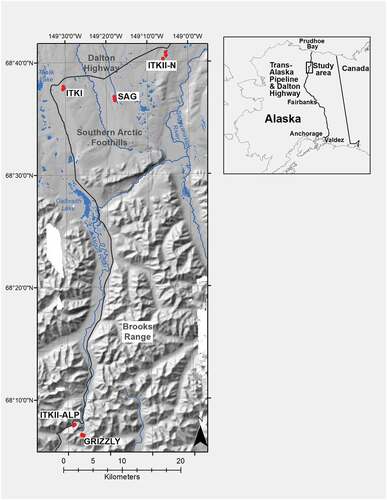
Table 1. Study site characteristics and plots sampled per site.
Figure 2. (Top) Grizzly Glacier cirque photographed and used with permission by Jim Ellis in July 1977. (Bottom) The same general scene photographed by SK (formerly S. Gowan) in July 2017. These photographs were taken from slightly different locations and distances from the glacier. Red arrows indicate moraine features for comparison of ice mass.
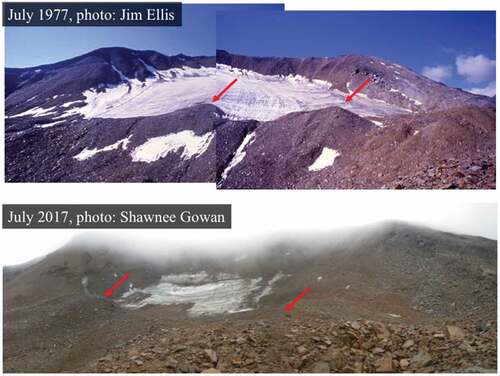
Figure 3. Examples of (A) rock and (B) fine-grained substrate plots on each glacial deposit surface in order of the estimated age since deglaciation.
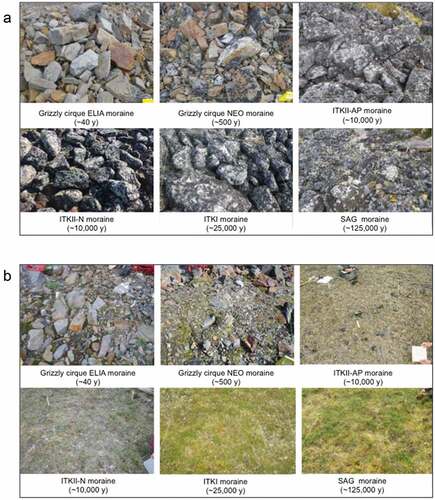
Figure 4. Five maximum thallus radius measurements taken across both the ELIA (triangles) and NEO (squares) moraines in the Grizzly Glacier cirque from three different lichen taxa: Rhizocarpon geographicum s.l. (shown in black) and Pseudephebe spp. and Umbilicaria spp. (shown in gray). Age estimates were derived from growth rates presented in (Calkin and Ellis Citation1980). Red symbols represent average age estimates of the five largest thalli on both moraines.
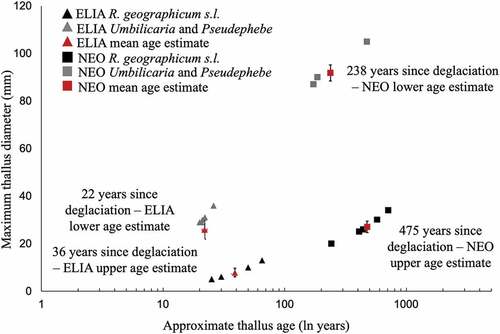
Figure 5. Cluster analysis of plots (n =42) from 1,700 to 800 m.a.s.l. and from 22 to 125,000 years since deglaciation in the central Brooks Range, north into the Arctic foothills. Study plot numbers are along the left axis (red = rocky plots; green = fine-grained plots). Seven main clusters of plots are defined by large red numbers. Groups with highest percentage floristic similarity are located closest to the left edge of the diagram; dissimilarity increases as subgroup nodes expand away from branch tips. Scale bar (top) shows percentage similarity for each cluster.
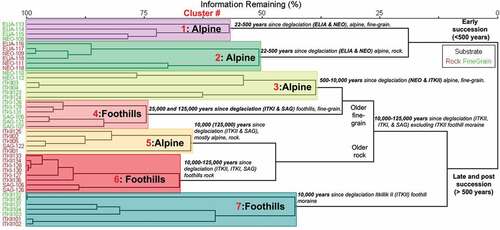
Figure 6. Timeline of major changes to vegetation communities on both (A) fine-grained and (B) rock substrates across a 125,000 year chronosequence and 900 m altitudinal gradient.
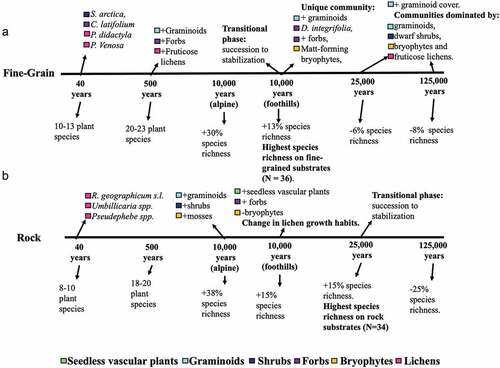
Table 2. Plant community type summary table with characteristic species for each community type defined across the sequence.
Figure 7. (A), (B) Average species richness and (C), (D) total percentage cover of major growth forms on (A), (C) fine-grained and (B), (D) rock substrates across chrono- and toposequences (ELIA =26–40 years since deglaciation, NEO =238–475 years since deglaciation, ITKII =10,000–25,000 years since deglaciation, ITKI =25,000–75,000 years since deglaciation, and SAG =125,000–780,000 years since deglaciation).

Table 3. Percentage change and number of plant species accumulated or lost from one glacial surface to the next across the chronosequence.
Figure 8. NMS ordination grouped by (A) substrate and (B) time since exposure. Bi-plots (represented by arrows) within ordinations represent environmental factors with a Pearson’s correlation coefficient . Axes are labeled with variables having strong Kendall’s tau (
correlation coefficients. Groups marked “A” in (B) indicate alpine glacial deposits.

